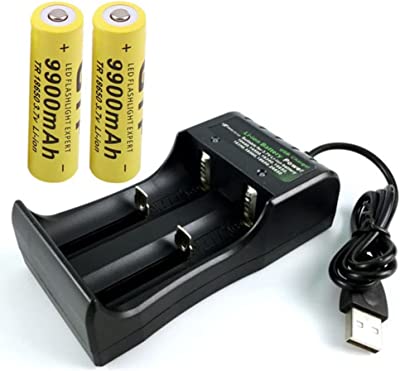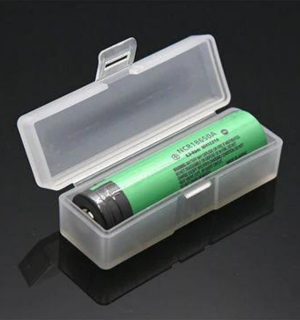1. Importance of choosing the right battery for specific devices or applications:
Selecting the right battery for your specific electronic device or application is crucial for ensuring optimal performance, longevity, and safety. Different devices have unique power requirements, and using an incompatible or subpar battery can result in inefficient operation, reduced lifespan, or even damage to the device. By understanding the specific needs of your device and choosing the appropriate battery, you can maximize its performance, extend its lifespan, and enhance overall user experience.
2. Benefits of selecting the appropriate battery:
Choosing the right battery offers several significant benefits. First and foremost, it ensures compatibility with your device, providing a seamless power source that meets its voltage, capacity, and current requirements. This compatibility translates into improved performance, as the device operates at its optimal power levels, maximizing efficiency and minimizing energy wastage. Additionally, the right battery selection enhances the device’s longevity by providing a stable and consistent power supply, reducing the risk of premature shutdowns or malfunctions. Furthermore, selecting a battery that aligns with your device’s temperature range and environmental conditions can contribute to safe and reliable operation. Overall, the benefits of selecting the appropriate battery extend beyond immediate performance gains, offering long-term reliability and cost-effectiveness for your electronic device or application.
Understanding Battery Types and Chemistries
1. Overview of common battery types:
There are several common battery types used in electronic devices, each with its own characteristics and applications. Some of the most prevalent battery types include alkaline, lithium-ion (Li-ion), and nickel-metal hydride (NiMH). Alkaline batteries are widely available, affordable, and suitable for low-drain devices like remote controls and toys. Lithium-ion batteries, on the other hand, offer high energy density, longer lifespan, and rechargeability, making them ideal for smartphones, laptops, and other portable electronics. Nickel-metal hydride batteries are also rechargeable and are commonly used in applications such as digital cameras, cordless phones, and power tools.
2. Explanation of different battery chemistries and their characteristics:
Battery chemistries determine the performance and characteristics of a battery. Understanding these chemistries can help in selecting the right battery for your specific needs. For instance, alkaline batteries use zinc and manganese dioxide chemistry, offering a stable voltage and good performance at moderate power levels. Lithium-ion batteries use lithium compounds as the active material, providing high energy density, lightweight design, and excellent rechargeability. They are known for their low self-discharge rate and ability to handle high current demands. Nickel-metal hydride batteries use a hydrogen-absorbing alloy as the negative electrode, delivering a balance between capacity, power output, and rechargeability.
Other battery chemistries worth mentioning include nickel-cadmium (NiCd), lead-acid, and lithium polymer (Li-Po). NiCd batteries are rechargeable and have good power output but suffer from memory effect and environmental concerns due to the use of toxic cadmium. Lead-acid batteries are commonly used in automotive applications, providing high current output but being bulky and requiring maintenance. Lithium polymer batteries are a variation of Li-ion batteries and feature a flexible and lightweight design, making them suitable for slim and portable devices.
By understanding the different battery types and their chemistries, you can assess their specific characteristics and select the battery that best matches your device’s requirements in terms of power output, energy density, rechargeability, and other essential factors.

Assessing Power Requirements
A. Determine the power needs of the electronic device or application:
Before choosing a battery, it is essential to understand the power requirements of your electronic device or application. Start by identifying the specific power needs, such as the voltage, capacity, and current requirements. This information can usually be found in the device’s user manual or technical specifications. By determining the power needs, you can ensure that the selected battery is capable of delivering the required amount of power to operate the device effectively.
B. Consider voltage, capacity, and current requirements:
- Voltage: The voltage requirement is one of the critical factors to consider when choosing a battery. Ensure that the battery’s voltage matches the device’s voltage requirement. Using a battery with a different voltage may result in insufficient power delivery or even damage to the device. Common voltage ratings for batteries include 1.5V (alkaline), 3.7V (Li-ion), and 1.2V (NiMH).
- Capacity: Battery capacity refers to the amount of charge it can store and deliver over a specific period. It is measured in milliampere-hours (mAh) or ampere-hours (Ah). Higher capacity batteries generally provide longer runtime, allowing your device to operate for extended periods before requiring recharging. Consider the expected usage time and select a battery with sufficient capacity to meet your device’s runtime requirements.
- Current: The current requirement is crucial, especially for devices with high power demands. It indicates the amount of current the device draws during operation. Ensure that the battery can supply the required current without overheating or causing voltage drops. The device’s current draw can vary, particularly during peak loads or when multiple components are active simultaneously, so it’s important to choose a battery with an appropriate current rating to handle these fluctuations.
By assessing the power requirements of your electronic device or application and considering factors such as voltage, capacity, and current, you can select a battery that matches your device’s energy needs. This ensures reliable and efficient power delivery, allowing your device to function optimally and avoid potential performance issues related to inadequate power supply.
Evaluating Size and Form Factor
1. Match the battery size and form factor to the device’s specifications:
When choosing a battery, it is crucial to evaluate the size and form factor to ensure compatibility with your device. Check the device’s specifications or battery compartment dimensions to determine the maximum allowable size of the battery. Choosing a battery that matches the specified size will ensure a proper fit and prevent issues such as loose connections or the inability to close the battery compartment securely.
2. Consider space constraints and compatibility with battery compartments:
In addition to matching the size, it is essential to consider any space constraints or design limitations of your device. Some devices have limited space, requiring smaller or specially shaped batteries. Evaluate the available space and consider the battery’s form factor, such as cylindrical, prismatic, or button-top, to ensure it can fit within the device’s designated area without causing any interference with other components or compromising device functionality.
Furthermore, pay attention to the compatibility of the battery with the device’s battery compartment. Some devices have specific requirements, such as polarity or terminal configurations, that must be considered when selecting a battery. Ensure that the battery’s terminals align correctly with the device’s contacts to establish a reliable connection and avoid any potential damage or malfunction.
By carefully evaluating the size and form factor of the battery, as well as considering any space constraints or compatibility issues with the device’s battery compartment, you can choose a battery that seamlessly integrates with your device. This ensures a proper fit, reliable power delivery, and optimal performance without compromising the physical integrity or functionality of your electronic device.
Analyzing Discharge Profiles
1. Identify the discharge characteristics required for the device or application:
Understanding the discharge characteristics needed for your device or application is essential for selecting the right battery. Some devices may require a constant and consistent power supply, while others may tolerate fluctuations in power output. Assess the specific requirements of your device in terms of discharge profiles, such as constant voltage, constant current, or a combination of both. This information can help you determine the discharge behavior your battery needs to support.
2. Determine if the battery can deliver consistent power throughout its discharge:
Different batteries exhibit varying discharge profiles, and it is crucial to evaluate if the selected battery can deliver consistent power throughout its discharge cycle. Some batteries may experience voltage sag or a decrease in performance as they discharge, which can impact the device’s operation. Assess the discharge characteristics of the battery, such as voltage stability and capacity retention, to ensure that it can provide the necessary power consistently over the expected discharge duration.
Additionally, consider the rate of discharge that your device requires. Some batteries may excel at delivering high currents for short durations, while others are designed for lower current applications over longer periods. Ensure that the chosen battery can meet the specific discharge rate requirements of your device or application without experiencing significant voltage drops or performance degradation.
By analyzing the discharge profiles and understanding the discharge characteristics required for your device or application, you can select a battery that can deliver consistent power throughout its discharge cycle. This ensures that your device operates reliably and efficiently, without experiencing power fluctuations or performance issues due to inadequate battery capabilities.
Considering Temperature Range
1. Evaluate the temperature range in which the device will operate:
The temperature range in which your device will operate is a critical factor to consider when choosing a battery. Evaluate the expected temperature extremes that your device may encounter during normal operation or in specific environmental conditions. Consider factors such as ambient temperature, heat dissipation within the device, and potential exposure to extreme cold or heat. Understanding the temperature range will help you select a battery that can withstand and perform optimally within those conditions.
2. Select a battery that can perform optimally within the specified temperature range:
Different battery chemistries and designs have varying temperature tolerances. It is important to select a battery that can operate within the specified temperature range of your device. Extreme temperatures can impact battery performance, capacity, and lifespan. High temperatures can accelerate chemical reactions within the battery, leading to faster degradation, reduced capacity, and even thermal runaway. Similarly, low temperatures can cause increased internal resistance, limiting the battery’s ability to deliver power effectively.
Choose a battery that is specifically designed or rated to operate within the expected temperature range of your device. Some batteries may have wider temperature tolerances than others, offering better performance and stability across a broader range of temperatures. Ensure that the selected battery can maintain its capacity, provide consistent power output, and avoid safety risks in the anticipated temperature conditions.
Additionally, consider any temperature management features or precautions that may be necessary for your device. Some batteries or devices may require thermal management systems, insulation, or temperature monitoring to ensure safe and optimal operation within the specified temperature range.
By considering the temperature range in which your device will operate and selecting a battery that can perform optimally within that range, you can ensure reliable and efficient power delivery, maximize battery lifespan, and mitigate potential risks associated with extreme temperature conditions.
Assessing Cycle Life and Shelf Life
1. Determine the desired lifespan and longevity requirements:
When choosing a battery, it is important to consider the desired lifespan and longevity requirements for your specific application. Determine how long you expect the battery to last before needing replacement or significant degradation. This lifespan requirement may vary depending on the device or application, ranging from a few months to several years. Assessing the desired lifespan helps in selecting a battery with the appropriate cycle life and shelf life to meet your needs.
2. Evaluate the battery’s cycle life and shelf life:
- Cycle life: Cycle life refers to the number of charge and discharge cycles a battery can endure before its capacity significantly decreases. Different battery chemistries and designs have varying cycle life capabilities. For example, lithium-ion batteries typically have a higher cycle life compared to alkaline batteries. Evaluate the cycle life specification of the battery you are considering and ensure it aligns with your application’s requirements. A longer cycle life indicates that the battery can sustain repeated charging and discharging without experiencing a significant reduction in capacity or performance.
- Shelf life: Shelf life refers to the duration a battery can be stored without significant capacity loss. Some batteries, such as alkaline, have a long shelf life and can be stored for several years without notable degradation. In contrast, rechargeable batteries like lithium-ion or NiMH may have a shorter shelf life due to self-discharge over time. Consider the expected storage duration of the battery and choose one with a shelf life that meets your needs. This ensures that the battery retains its charge and performance even after being stored for extended periods.
By assessing the desired lifespan and evaluating the battery’s cycle life and shelf life, you can select a battery that aligns with your longevity requirements. This ensures that the battery can withstand the expected number of charge/discharge cycles and maintain its performance even during storage. Choosing a battery with an appropriate cycle life and shelf life helps maximize its usability, reduces the frequency of replacements, and ensures reliable power availability throughout the battery’s lifespan.
Reviewing Safety and Environmental Factors
1. Consider safety features and certifications:
When selecting a battery for your electronic device or application, it is crucial to prioritize safety. Look for batteries that offer built-in safety features and certifications to mitigate potential risks. These safety features may include overcharge protection, short circuit protection, thermal protection, and voltage regulation. Such mechanisms help safeguard against battery malfunctions, overheating, and potential hazards.
Certifications from recognized regulatory bodies, such as UL (Underwriters Laboratories) or IEC (International Electrotechnical Commission), provide additional assurance of the battery’s compliance with safety standards. These certifications indicate that the battery has undergone rigorous testing to ensure its safety and reliability. Prioritizing batteries with these safety features and certifications helps protect your device, prevent accidents, and provide peace of mind.
2. Evaluate the environmental impact and disposal options:
Environmental considerations should also play a role in selecting the right battery. Evaluate the environmental impact of the battery’s chemistry and components. Certain battery chemistries, such as lithium-ion, are known for their relatively low environmental impact compared to other alternatives. Consider the potential for toxic or hazardous materials in the battery and choose options with a lower environmental footprint.
Additionally, assess the disposal options for the battery. Look for batteries that can be easily recycled or disposed of properly through established recycling programs. Many regions have specific recycling facilities for batteries, allowing them to be processed in an environmentally responsible manner. Avoid improper disposal of batteries, as they can pose risks to the environment and human health.
By reviewing safety features, certifications, and considering the environmental impact and disposal options, you can prioritize the safety of your device and make environmentally conscious choices. This not only protects the users and the environment but also promotes sustainable practices in battery usage and disposal.
Researching Manufacturer Reputation and Quality
1. Look for reputable battery manufacturers with a track record of reliability:
When choosing a battery for your specific electronic device or application, it is essential to research and select batteries from reputable manufacturers. Look for companies with a proven track record of producing high-quality batteries known for their reliability and performance.
Established manufacturers often invest in research and development, adhere to stringent quality control measures, and prioritize customer satisfaction. Opting for batteries from reputable manufacturers increases the likelihood of receiving a product that meets your expectations and delivers consistent performance.
2. Consider user reviews and ratings for insights into battery performance:
User reviews and ratings provide valuable insights into the performance and reliability of batteries. Search for customer feedback on reputable online platforms or forums where users share their experiences with specific battery brands or models.
Pay attention to both positive and negative reviews to get a comprehensive understanding of the battery’s strengths and weaknesses. Look for recurring themes or common issues raised by users to identify any potential concerns or advantages. By considering user reviews and ratings, you can gather real-world feedback on battery performance, durability, and overall customer satisfaction.
Researching the manufacturer’s reputation and considering user reviews allows you to make informed decisions about the quality of the batteries you choose. Selecting batteries from reputable manufacturers with a history of reliability increases the likelihood of obtaining high-quality products that meet your expectations. Additionally, insights from user reviews provide valuable perspectives and help you gauge the performance and suitability of batteries for your specific needs.
Final Thoughts
1. Recap the key points for choosing the right battery:
In this guide, we have explored the essential factors to consider when choosing the right battery for your specific electronic device or application.
We discussed the importance of assessing battery types and chemistries, evaluating power requirements, considering size and form factor, analyzing discharge profiles, assessing temperature range compatibility, evaluating cycle life and shelf life, reviewing safety and environmental factors, researching manufacturer reputation and quality, and considering user reviews.
By considering these key points, you can make a well-informed decision when selecting a battery that meets your device’s requirements.
2. Emphasize the importance of selecting the appropriate battery for optimal device performance and longevity:
Choosing the right battery is crucial for ensuring optimal performance and longevity of your electronic device or application. A battery that is well-suited to the specific requirements of your device can provide reliable power, longer runtime, and consistent performance.
It can also contribute to the overall safety and longevity of the device. By considering factors such as power requirements, size, discharge profiles, temperature range, and safety features, you can select a battery that not only meets the technical specifications but also enhances the device’s performance and extends its lifespan.
Selecting the appropriate battery requires careful consideration of various factors, and it is worth investing time and effort into the decision-making process. By choosing the right battery, you can optimize the performance, reliability, and lifespan of your electronic device, ensuring a positive user experience and avoiding potential issues related to compatibility or inadequate power supply.
In conclusion, by following the guidelines outlined in this article, you can confidently choose the right battery for your specific electronic device or application. Take into account the power requirements, size and form factor, discharge profiles, temperature range, safety features, and user feedback. With a well-chosen battery, you can enhance the performance, longevity, and overall satisfaction of your electronic devices.

